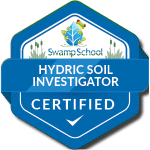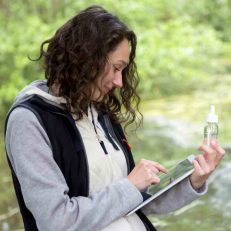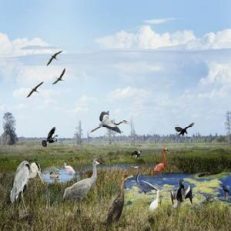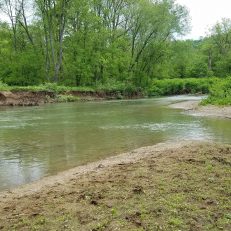Product Description
Course Details
Key aspects of the program include:
- Hydric Soils Expertise: The course offers extensive coverage of hydric soil properties, formation processes, classification, and functions, emphasizing their ecological importance in wetland environments.
- USACOE Standards Alignment: The modules are tailored to integrate the USACOE’s regional supplements, equipping participants with insights that are both relevant and compliant with federal wetland delineation standards.
- Practical Application: Through interactive content such as simulated field studies and case analysis, learners can apply theoretical knowledge to practical scenarios, enhancing their field investigation skills.
- Convenient Online Access: The program is designed for flexibility, enabling learners to progress through the content at a pace that suits their individual schedules, which is particularly advantageous for working professionals.
- Professional Certification: After successfully completing the program, participants will receive a certification that acknowledges their expertise in hydric soils in line with USACOE guidelines, which can significantly benefit their professional endeavors in environmental consulting, land management, and regulatory roles.
This program is targeted at environmental professionals, soil scientists, land use planners, and regulatory agency personnel who seek to deepen their technical understanding of hydric soils for professional development or to enhance their contributions to wetland conservation and management initiatives. With its specialized focus on hydric soils within the framework of USACOE regulations, the program serves as a critical educational pathway for those dedicated to the field of wetland science and management.
This course consists of twelve online modules that will assess students’ your knowledge about the US Army Corps of Engineers Hydric Soils Indicators for all 10 regions. Students are welcome to complete them at their own pace during the class’s 16-week time frame. In addition to the modules, there is a field work project that needs to be coordinated with the instructor.
The class concludes with a review of your field work and a final exam. Upon successful completion of the class and a grade of 80% or higher, you will earn Certified Hydric Soils Investigator (CHSI) status and receive a certificate as well as an electronic seal to use on reports and proposals. This certification is valid for five years and is eligible for renewal with additional continuing education. the Certified Hydric Soils Investigator (CHSI) is part of The Swamp School’s overall Certified Wetland Delineator Program (CWD).
How the Class Works
- 11 field work projects
- 11 data collection exercises
- 12 online learning modules, including:
- Video presentations
- Handouts
- Class discussion
- Assignments
- Quizzes
- Final exam
- Instructor-guided virtual field work
Materials Needed
You will need to provide the following items for this class:
- Munsell Soil Color Chart
- Soil auger or shovel
Prerequisite
Wetland Delineation Training
Understanding Hydric Soils
Hydric soils are a unique type of soil formed under conditions of saturation, flooding, or ponding long enough during the growing season to develop anaerobic conditions in the upper part of the soil profile. These soils are typically found in wetland ecosystems, such as marshes, swamps, and bogs, and are characterized by a high water table. This high water table can lead to the formation of distinctive soil features such as gleying and mottling.
Defined by the Natural Resources Conservation Service (NRCS), hydric soils are those that remain saturated with water for at least three consecutive months during the growing season. The Soil Taxonomy system further classifies these soils based on their saturation period and the resulting anaerobic conditions.
The formation of hydric soils is influenced by continuous saturation for periods of one or two weeks or more during the growing season. The parent material plays a crucial role in how the soil retains water and develops hydric characteristics. Additionally, the biology of the soil, including the presence of microorganisms, significantly impacts the development of anaerobic conditions. These microorganisms rapidly consume oxygen in the soil, leading to slower decay rates of plant matter and the accumulation of organic materials.
Under these saturated conditions, the lack of oxygen slows the decomposition of plant matter, resulting in the formation of organic soils. These soils, often rich in peat or muck, are a hallmark of hydric soils in wetland ecosystems.
Identifying Hydric Soils
Identifying hydric soils is a critical step in wetland conservation and management. The National Cooperative Soil Survey (NCSS) provides comprehensive guidelines for this process, utilizing a combination of field indicators to identify hydric soils accurately.
Hydric soil indicators are primarily formed through the accumulation or loss of iron, manganese, sulfur, or carbon compounds. These indicators are essential for field identification and are collectively known as the “hydric soil field indicators” as per the USDA-NRCS guidelines.
Carbon-based features are particularly significant in identifying hydric soils under anaerobic conditions. These features are categorized into three groups: organic soil materials with more than 12% organic carbon, mucky mineral layers with 5-12% organic carbon, and dark-colored (organic-rich) mineral soil material with less than 5% organic carbon. These indicators help soil scientists and environmental professionals identify hydric soils in the field, ensuring accurate wetland delineation and conservation efforts.
Career Opportunities and Certification
Career opportunities in hydric soil science are abundant and span various fields, including wetland conservation, soil survey, and environmental consulting. The National Cooperative Soil Survey (NCSS) offers training and certification programs for soil scientists and conservationists, providing essential skills and knowledge for professionals in this field.
The Soil Science Society of America (SSSA) also offers certification programs, such as the Certified Professional Soil Scientist (CPSS) and the Certified Soil Scientist (CSS) certifications. These credentials demonstrate a high level of expertise in soil science and can significantly enhance career opportunities.
Additionally, the Natural Resources Conservation Service (NRCS) provides training and certification programs for soil conservationists and wetland specialists. These programs focus on hydric soil identification, wetland conservation, and soil survey techniques, equipping professionals with the skills needed to excel in their careers.
In conclusion, hydric soils are a vital component of wetland ecosystems. Understanding their formation, identification, and conservation is essential for maintaining these ecosystems. Career opportunities in hydric soil science are diverse, and certification programs can enhance expertise and career advancement, contributing to the effective conservation and management of wetland environments.

 Grow your skills with this online course that includes field work that can be performed locally.
Grow your skills with this online course that includes field work that can be performed locally.




